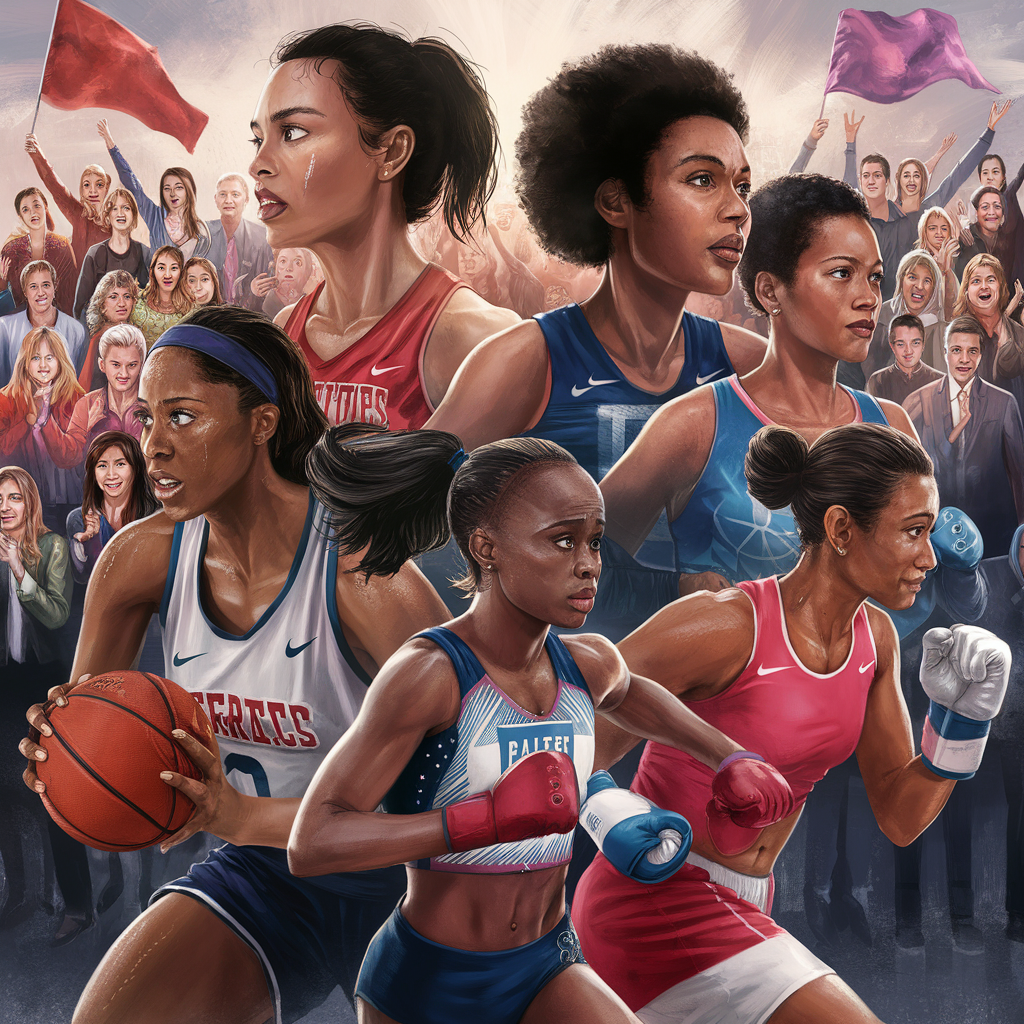The Evolution of Fan Engagement: How Social Media is Shaping the Sports Experience
Picture this: It’s a crisp Sunday afternoon, and you’re nestled in your favorite armchair, wearing the jersey of your beloved team. The TV is blaring, and your friends are spread out around the living room, each of you clutching a beverage like it’s the Holy Grail. As the game kicks off, your phone buzzes with notifications—tweets, Instagram stories, and Facebook updates from fellow fans. Suddenly, you’re not just a spectator; you’re part of a massive, buzzing ecosystem of supporters, all sharing in the highs and lows of the game. That’s the magic of social media in sports today.
Let’s rewind a bit. I remember once going to a baseball game with my dad when I was a kid. We had to rely on the old-school scoreboard and the occasional radio update to get the play-by-play. Fast forward to now, and you can get live updates, interact with players, and even watch behind-the-scenes footage—all from the palm of your hand. It’s wild, right?
The Shift from Passive to Active Engagement
Back in the day (let’s say, pre-Twitter), being a sports fan was more about passive consumption. You showed up, cheered, maybe wore a foam finger, and then went home. But social media flipped that on its head. Now, fans have the opportunity to engage in real-time, share opinions, and connect with others who are just as passionate. It’s like being part of a giant global watch party, and everyone’s invited.
Social media platforms have become the new stadiums, where fans gather to express their emotions. Think about it: how many times have you found yourself glued to your phone during a game, scrolling through tweets, memes, or heated debates over a controversial call? It’s almost like a parallel game—one played on your screen, where you can react to every touchdown or missed penalty kick without missing a beat. And let’s be honest, some of those memes are just as entertaining as the game itself (remember the crying Jordan face? Classic!).
The Power of Connection
One of the most exciting aspects of social media in sports is how it fosters connections. Fans can interact not only with each other but also with players and teams. There’s something surreal about getting a tweet from your favorite athlete or seeing them post a picture of their coffee on Instagram. It’s like, “Hey! They’re just like us!” (well, except for the whole being a professional athlete part).
For instance, consider the NBA. Players like LeBron James or Stephen Curry have massive followings—not just because they’re incredible on the court, but because they engage with fans on a personal level. They share their lives and thoughts, making them more relatable and approachable. It’s no longer just about the game; it’s about the personalities behind the jerseys.
Creating a Sense of Community
Social media has also allowed for the creation of fan communities that transcend geographical boundaries. I mean, I can be in my little corner of the world, cheering for my team, and suddenly find myself chatting with a fan from a different continent. It’s like a global family reunion, minus the awkward small talk. Whether it’s through Facebook groups, Twitter threads, or Instagram hashtags, fans are finding their tribe. It’s beautiful, really.
These communities often rally around significant moments—like a championship win or a heartbreaking loss. I remember when my team lost a nail-biter in the playoffs. I jumped onto Twitter, and it felt like I was in a group therapy session with thousands of fellow fans, all sharing their grief and frustration. It’s cathartic to know that you’re not alone in your emotions!
The Role of Influencers and Content Creators
And let’s not forget the rise of influencers and content creators within the sports realm. You’ve got YouTubers breaking down plays, podcasters analyzing every detail, and TikTokers creating hilarious skits that resonate with fans. These creators have become a vital link between teams and fans, often adding layers of entertainment and insight that traditional media can’t quite capture. Honestly, some of their commentary can be just as engaging (if not more) than what you’d hear on a sports network.
For example, I stumbled across a TikTok account where a guy humorously reenacts famous sports moments. It’s not just funny; it’s a great way to relive memories and share a laugh with fellow fans. This kind of content also serves as a reminder that sports are meant to be fun—a sentiment that sometimes gets lost in the seriousness of competition.
Real-Time Interaction and Feedback
Another key aspect of social media is the real-time interaction it enables. Remember when you used to write letters to your favorite players? (Okay, maybe that was just me.) Now, you can tweet them your love—or frustration—instantly. Teams are tapping into this by using social media to gauge fan reactions and engage directly with their audience.
Live Q&A sessions, polls, and interactive content have become commonplace. I once participated in a Twitter poll about which player should take the last shot in a game. While my pick was ultimately wrong (thanks, universe), it felt amazing to have my voice heard. It’s this kind of engagement that makes fans feel valued. It’s like being part of the team, even if you’re just sitting on your couch in your pajamas.
The Double-Edged Sword of Social Media
Of course, social media isn’t all rainbows and unicorns. With great power comes great responsibility—or at least that’s what my high school history teacher used to say (thanks, Mr. Thompson). While the ability to connect with others is fantastic, the anonymity of the internet can lead to some pretty toxic behavior. Online trolling, harassment, and negativity can mar the experience for many fans.
There have been instances where players have faced harassment online, which is heartbreaking. It’s a reminder that while we’re all just fans trying to enjoy the game, there’s a darker side that needs to be addressed. Teams and leagues have started taking steps to combat this, but it’s a work in progress.
The Future of Fan Engagement
So, what’s next? With technology constantly evolving, the possibilities for fan engagement are practically limitless. We’re already seeing the rise of virtual reality experiences, where fans can feel like they’re sitting courtside (jealous, right?). Imagine being able to experience a game from the perspective of your favorite player! That’s some next-level engagement.
And let’s not forget about the impact of NFTs and blockchain technology in sports. Teams are exploring ways to create digital collectibles that fans can buy, sell, or trade. It’s a new frontier for fan engagement, and while it might seem a bit confusing now, I can’t help but feel excited about what’s to come.
Wrapping It Up
As I sit here reflecting on how far we’ve come, it’s clear that social media has transformed the sports experience. From passive viewers to active participants, fans now have a voice and a platform to connect with others. It’s like we’re all part of this grand narrative, where every tweet, meme, and post adds to the story of our favorite teams.
So, whether you’re a die-hard fan or just someone who occasionally tunes in for the Super Bowl, take a moment to appreciate the magic of social media in sports. It’s not just about the game anymore—it’s about community, connection, and shared experiences. Who knows what the future holds? But one thing’s for sure: I’ll be right there, phone in hand, ready to engage and cheer on my team. And hey, maybe I’ll even create my own meme or two along the way (no promises, though…).







